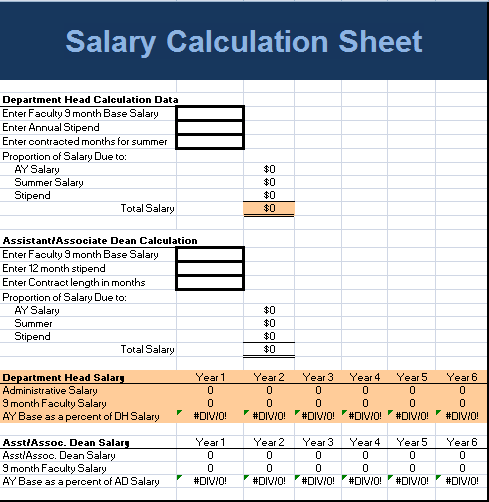Capitalized Interest Journal Entry Example
However, this decision is up to the companies you are looking at investing in and whether they choose to capitalize interest expenses during construction. Interest is normally expensed as incurred, except when it is incurred in conjunction with major capital additions. The year-end expenditure base is thus $300,000, or $400,000 less $100,000. The average accumulated expenditures for 20×1 are $150,000, or one-half of the sum of the beginning and ending totals ($0 plus $300,000). At the end of the year, it has recognized non-interest-bearing liabilities (such as accounts payable) for $100,000 of that amount.
- This balance represents the total amount of the intangible asset that has been expensed.
- In this journal entry, the depreciation expense is an income statement item while the accumulated depreciation is a contra account to the fixed asset on the balance sheet.
- At the end of the year, it has recognized non-interest-bearing liabilities (such as accounts payable) for $100,000 of that amount.
- KPKI should pass the following journal entry while recording the capitalized interest.
- It represents the reputation, customer base, and other non-physical assets contributing to the business’s value.
Likewise, while total expenses increase, total assets decrease as a result of allocating the cost of the capitalized asset to the income statement. Capitalized interest is the cost of the funds used to finance the construction of a long-term asset that an entity constructs for itself. The capitalization of interest is required under the accrual basis of accounting, and results in an increase in the total amount of fixed assets appearing on the balance sheet. An example of such a situation is when an organization builds its own corporate headquarters, using a construction loan to do so.
Example of Capitalized Interest
These events can trigger the recognition and account for borrowing costs under IAS 23. Companies must be aware of these conditions to record these costs promptly. Borrowing costs may include interest expenses calculated using the effective interest rate. On top of that, any interest expense on preferred capital does not fall under the scope of this standard. Similarly, it does not apply to qualifying assets measured at fair value.
The interest rate needs to be weighted average if the company borrows many loans at a different rate. The Accumulated Amortization account acts as a running total of the amount of the asset’s cost written off over time. Therefore, it will cost $30 million ($21 million factory site + $9 million construction).
Otherwise, interest capitalization is not required, and it should be expensed immediately. Capitalized interest is part of the historical cost of acquiring assets that will benefit a company over many years. As mentioned, we capitalize the fixed asset so that we can spread the cost of the fixed asset over the periods that it provides benefit to the company. So, at the time of bringing the fixed asset into our business with the purchase, there is no expense for the income statement yet.
What is considered an example of capitalizing interest during construction?
ABC International is building a new world headquarters in Rockville, Maryland. ABC made payments of $25,000,000 on January 1 and $40,000,000 on July 1; the building was completed on December 31. Interest on capital is to be paid by the business and acts as an expense. Owners may seek a return when would a bond be called on investment in the form of a fixed rate of interest to the extent of the amount employed by them in the business. There are mainly two effects of amortization in the financial statements. IAS 23 states that companies must cease capitalization when either of the following happens.
How to Make Entries for Accrued Interest in Accounting
It is important for a company to realize that short-term cash obligation may also be the same; if interest is due immediately, there will be the same cash outlay regardless of how interest is recorded. The only difference between capitalized interest and expensed interest is the timing in which the expense shows up on the income statement. Typical examples of long-term assets for which capitalizing interest is allowed include various production facilities, real estate, and ships. Capitalizing interest is not permitted for inventories that are manufactured repetitively in large quantities. U.S. tax laws also allow the capitalization of interest, which provides a tax deduction in future years through a periodic depreciation expense. As shown in the journal entry for capitalization of the fixed asset above, we do not record the expense immediately after purchasing the fixed asset.
Accounting for Borrowing Costs (Journal Entry and Example)
Borrowing costs do not have any separate journal entries when capitalized. Instead, companies make these costs a part of the asset’s recognition cost. However, those borrowing costs fall under IAS 23, which has several conditions for recognition. Before accounting for borrowing costs, it is crucial to understand what they are.
Capitalized Interest Example #2
Borrowing costs include any finance costs incurred on a qualifying asset. However, these costs must relate to the asset’s acquisition, construction or production. However, companies cannot capitalize on all borrowing costs when they occur. Instead, they must ensure these costs are directly attributable to three uses for the underlying asset. However, these costs apply to the context of the assets they finance.
Finish Your Free Account Setup
While a student is still in school, interest accrues on the student loan balance, and the total amount of owed interest is added to the principle of the loan, effectively increasing the monthly interest owed. If you capitalize the interest, your monthly payments (and lifetime interest costs) will be higher. The most important thing to know is that you need to pay capitalized interest charges at some point, and you will pay additional interest when you capitalize.
Accurate and timely accrued interest accounting is important for lenders and for investors who are trying to predict the future liquidity, solvency, and profitability of a company. The following example assumes that the project began in 2015 and finished at the end of 2016. During this period, $100,000 would have been capitalized in 2015, another $200,000 in 2016, and $50,000 in 2017. This expenditure base can be divided further into two segments if interest is attributable to both specific and general debt.










